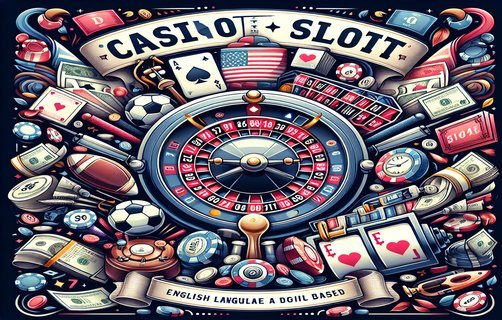The Clash of Legends: Analyzing Dragon vs Tiger Gaming Mechanics
महाकाय टकराव: ड्रैगन बनाम बाघ खेल यांत्रिकी का विश्लेषण
In the world of gaming, the excitement of competition often hinges on the mechanics that govern play. One such intriguing matchup is the 'Dragon vs Tiger' dynamic, which has been a popular theme in gaming circles. This analysis delves into several crucial aspects including victory point trackers, centralized playboards, objective triggering rules, nerfing mechanics, luck-based combat, and movement dynamics such as moving backward. Each of these components plays a significant role in shaping player experience and overall game balance.
Victory point trackers are essential in competitive gameplay. They serve to quantify achievements and successes within the game, adding a layer of strategy for players. Keeping accurate records encourages players to not only focus on immediate objectives but also long-term goals. In 'Dragon vs Tiger,' effectively utilizing these trackers can determine the outcome of encounters, driving players to think critically about their moves.
The concept of a central playboard is another pivotal element. This environment provides the playing field where all actions take place and can dictate strategy and player interactions. A centralized board allows players to visualize their positions relative to one another, leading to more dynamic gameplay. In this context, the interaction between the dragon and tiger is particularly fascinating as it can shift the balance of power in different scenarios.
Objective triggering rules are vital in defining how players can advance their positions and score. Essentially, these rules outline what actions lead to rewards or advantages. For instance, if a player achieves a specific task, they may unlock new abilities or gain victory points. This framework keeps players engaged and continuously strategizing their next moves. The balance of these rules is critical; too many easy triggers could lead to a lack of challenge, while overly complex rules may deter players.
Nerfing, or the process of reducing the effectiveness of certain game elements, is crucial for maintaining balance. In a setting where dragons and tigers compete, designers must ensure that neither side has overwhelming advantages. If one character or faction consistently outperforms others, player engagement can diminish. Regular updates and nerfing strategies help to reinvigorate the gaming landscape, allowing for a more equitable playing field.
Luck-based combat introduces an element of unpredictability in games, which can be exhilarating. Players often have to rely on chance, leading to thrilling moments that can turn the tide of the game. However, too much reliance on luck can frustrate players who prefer skill-based outcomes. Striking a balance between skill and chance is essential for sustaining player interest.
Lastly, the ability to move backward in gameplay can be an often-overlooked mechanic. This option can create tactical advantages, allowing for retreats or repositioning during combat. Including backward movement in the game can enable players to readjust their strategies in real-time, thus enhancing the depth of gameplay.
In summary, mechanics like victory point tracking, centralized playboards, objective procedures, nerfing, and luck dynamics intertwine in the 'Dragon vs Tiger' narrative. They create layers of complexity, ensuring that no two matches are the same and that competition remains fierce and exciting.
खेलों की दुनिया में, प्रतिस्पर्धा की उत्तेजना अक्सर उन तंत्रों पर निर्भर करती है जो खेल को संचालित करते हैं। इस प्रकार, 'ड्रैगन बनाम बाघ' विषय एक दिलचस्प मुकाबला है, जो गेमिंग सर्कलों में लोकप्रिय रहा है। यह विश्लेषण कई महत्वपूर्ण पहलुओं में शामिल है जैसे विजय बिंदु ट्रैकर, केंद्रीय खेल पट्टी, उद्देश्य ट्रिगरिंग नियम, नर्फिंग तंत्र, भाग्य आधारित लड़ाई, और पीछे की ओर चलने जैसी गतिशीलताएँ। इनमें से प्रत्येक घटक खिलाड़ी के अनुभव और समग्र खेल संतुलन को आकार देने में महत्वपूर्ण भूमिका निभाता है।
विजय बिंदु ट्रैकर प्रतियोगी खेल में महत्वपूर्ण हैं। ये खेल के भीतर उपलब्धियों और सफलताओं को मापने में मदद करते हैं, जो खिलाड़ियों के लिए रणनीति का एक स्तर जोड़ता है। सटीक रिकॉर्ड बनाए रखना खिलाड़ियों को न केवल तात्कालिक लक्ष्यों पर ध्यान केंद्रित करने के लिए प्रेरित करता है बल्कि दीर्घकालिक लक्ष्यों पर भी। 'ड्रैगन बनाम बाघ' में इन ट्रैकर्स का प्रभावी उपयोग मुठभेड़ों के परिणाम को निर्धारित कर सकता है, खिलाड़ियों को अपनी चालों के बारे में गंभीरता से सोचने के लिए प्रेरित करता है।
केंद्रित खेल पट्टी का विचार एक अन्य महत्वपूर्ण तत्व है। यह वातावरण वह खेल क्षेत्र प्रदान करता है जहां सभी क्रियाएँ होती हैं और यह रणनीति और खिलाड़ी के इंटरैक्शन को निर्धारित कर सकता है। एक केंद्रीय बोर्ड खिलाड़ियों को एक-दूसरे के सापेक्ष अपनी स्थिति का चित्रण करने की अनुमति देता है, जिससे अधिक गतिशील खेल अनुभव होता है। इस संदर्भ में, ड्रैगन और बाघ के बीच की बातचीत विशेष रूप से आकर्षक है क्योंकि यह स्थितियों में शक्ति संतुलन बदल सकती है।

उद्देश्य ट्रिगरिंग नियम यह परिभाषित करने में महत्वपूर्ण हैं कि खिलाड़ी अपनी स्थिति को कैसे आगे बढ़ा सकते हैं और स्कोर कर सकते हैं। मूल रूप से, ये नियम उन कार्यों को रेखांकित करते हैं जो पुरस्कारों या लाभों की ओर ले जाते हैं। उदाहरण के लिए, यदि कोई खिलाड़ी किसी विशिष्ट कार्य को पूरा करता है, तो उन्हें नई क्षमताएँ मिल सकती हैं या विजय बिंदु प्राप्त हो सकते हैं। यह ढाँचा खिलाड़ियों को लगातार संलग्न रखता है और अगली चालों की रणनीतिक योजना बनाने के लिए प्रेरित करता है। इन नियमों का संतुलन महत्वपूर्ण है; बहुत सारे आसान ट्रिगर्स चुनौती की कमी की ओर ले जा सकते हैं, जबकि अत्यधिक जटिल नियम खिलाड़ियों को हतोत्साहित कर सकते हैं।
नर्फिंग, या कुछ गेम तत्वों की प्रभावशीलता को कम करने की प्रक्रिया, संतुलन बनाए रखने के लिए महत्वपूर्ण है। एक सेटिंग में जहां ड्रैगन और बाघ प्रतिस्पर्धा करते हैं, डिजाइनरों को यह सुनिश्चित करना चाहिए कि कोई भी पक्ष प्रतिस्पर्धात्मक लाभ न रखे। यदि एक चरित्र या गुट लगातार दूसरों से बेहतर प्रदर्शन करता है, तो खिलाड़ी की भागीदारी कम हो सकती है। नियमित अपडेट और नर्फिंग रणनीतियाँ गेमिंग परिदृश्य को फिर से जीवंत करने में मदद करती हैं, जिससे अधिक न्यायसंगत खेल मैदान की अनुमति मिलती है।

भाग्य आधारित लड़ाई खेलों में अप्रत्याशितता का एक तत्व पेश करती है, जो उत्साहजनक हो सकती है। खिलाड़ी अक्सर मौके पर निर्भर होना पड़ता है, जिससे रोमांचक क्षण उत्पन्न होते हैं जो खेल का रुख बदल सकते हैं। हालाँकि, भाग्य पर अत्यधिक निर्भरता उन खिलाड़ियों को निराश कर सकती है जो कौशल आधारित परिणाम पसंद करते हैं। कौशल और सच्चाई के बीच संतुलन बनाना खिलाड़ियों की रुचि को बनाए रखने के लिए आवश्यक है।
अंत में, खेल में पीछे की ओर जाने की क्षमता एक अक्सर देखी गई तंत्र हो सकती है। यह विकल्प सामरिक लाभ पैदा कर सकता है, जो मुकाबले के दौरान वापसी या पुनः स्थिति को सक्षम बनाता है। खेल में पीछे की ओर चलाने का समावेश खिलाड़ियों को वास्तविक समय में अपनी रणनीतियों को फिर से समायोजित करने की अनुमति दे सकता है, इस प्रकार खेल की गहराई को बढ़ा सकता है।
अंततः, विजय बिंदु ट्रैकिंग, केंद्रीय खेल पट्टी, उद्देश्य प्रक्रियाएँ, नर्फिंग, और भाग्य गतिशीलताएँ 'ड्रैगन बनाम बाघ' कथा में एक दूसरे से जुड़ी होती हैं। ये जटिलता की परतें पैदा करती हैं, यह सुनिश्चित करते हुए कि कोई भी दो मुकाबले एक समान नहीं हैं और प्रतिस्पर्धा तीव्र और रोमांचक बनी रहती है।

comments
GamerGuru
This analysis really breaks down the mechanics well!
StrategyMaster
I appreciate the discussion on nerfing. It's crucial for game balance.
LuckBeWithYou
Luck-based combat can be a double-edged sword, can’t wait to see how they balance it.
MoveStrategist
I love the idea of backward movement; it adds a great tactical element.
VictoryHunter
Victory point trackers are a game changer. Makes me think more strategically.
CentralMind
Central playboards enhance interaction between players, great observation!